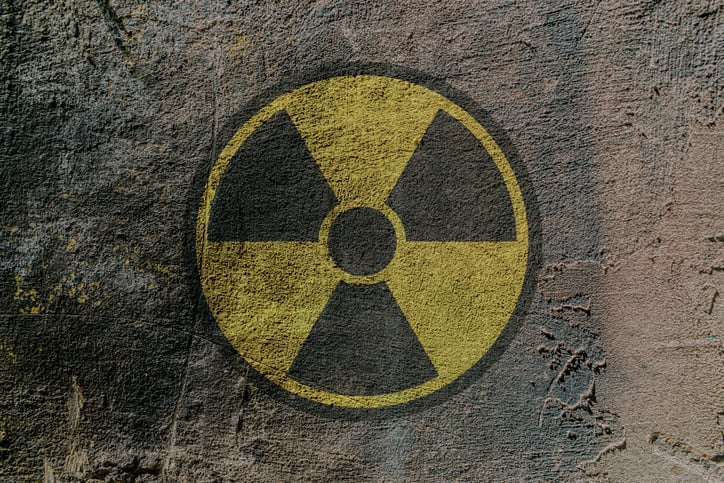
The shadow of climate change looms large over the construction industry as we make our approach into summer, with wildfires, floods, and megadroughts radically destabilizing both the physical and business terrain for builders across the US.
Continued job growth and rising pay are silver linings in the short term, but construction workers in some regions of the country need to begin seriously thinking about how global warming (not to mention life-endangering legislation) will impact their careers and communities over the long haul.
For this month’s news roundup, we’ve once again sifted through the headlines to identify five important stories that are shaping the world of construction on both the micro and macro level.
Let’s dive in.
- Housing Construction Halted Near Phoenix, AZ Due to Scarcity of Groundwater
- Florida Roads May Soon Be Paved With Radioactive Materials
- Pay Jumps As Construction Gains 25,000 Jobs
- Major Insurers Back Out of California Over Worsening Climate Conditions
- New York Contractors Stop Work Due to Smoke from Canadian Wildfires
Housing Construction Halted Near Phoenix, AZ Due to Scarcity of Groundwater
Climate change and a multi-decade drought in Arizona are straining the water supply near Phoenix, causing state officials to slam the brakes on new housing in some areas surrounding the sprawling desert city—a likely sign of things to come for the Western and Southwestern regions of the United States.
Governor Katie Hobbs announced the new restrictions during a press-conference in late May, the Associated Press reports. The new rules are not an outright ban on all new housing, Hobbs emphasized, noting that the limits will only apply to certain areas of Maricopa County, where Phoenix is located. Most new home construction will be allowed to continue apace for now in Phoenix proper and cities like Mesa and Scottsdale. For instance, roughly 80,000 approved but yet to be built homes will be allowed to move forward with construction, as these projects have already secured water supply certificates.
However, outlying suburban communities and unincorporated townships in the county will be forced to halt residential expansion entirely unless developers can identify alternative sources of water (recycled or surface water, for example). Even some subdivisions that have already received permitting approval may be forced to go back to the drawing board. The New York Times reports that the limits are likely to drive up housing costs in these relatively affordable areas.
The decision comes as demand for housing in Phoenix over the next 100 years is projected to exceed the supply of 4.9 million acre-feet of groundwater available to the ever-expanding metro area.
Phoenix has been in deep drought for the last 15 years. Meanwhile, the Colorado River, which supplies about 36% of Arizona’s water, has been choked nearly dry by a 23-year long megadrought. As a result, Western and Southwestern states like Arizona may see significant cuts to their water allotments from the river in the near future.
Takeaway: Construction professionals in Arizona who have historically relied on the drumbeat of Phoenix’s steady growth may need to shift their gaze to other housing markets in the coming years.
Florida Roads May Soon Be Paved With Radioactive Materials

Florida lawmakers have passed a bill that would explore paving roadways with phosphogypsum, a highly radioactive and cancer-causing waste byproduct of the fertilizer industry. The bill, HB 1191, now only needs Governor Ron DeSantis’ signature to become law.
The bill is the result of lobbying efforts by Mosaic Inc., a Tampa-based fertilizer and mining company that has contributed hundreds of thousands of dollars to Republican candidates in the Sunshine State, the Tampa Bay Times reports.
If ratified, the bill would require the Florida Department of Transportation to create and study a series of demonstration projects that use radioactive phosphogypsum in paving aggregates by no later than April 1, 2024. The bill states that the radioactive material would then be allowed for use in road construction “if the [Florida Dept. of Transportation] determines it suitable for such use.”
Phosphogypsum is usually sequestered in “gyp stacks” scattered across Florida, home to roughly 80% of the material in the US. According to the Environmental Protection Agency, phosphogypsum is a waste byproduct of the fertilizer industry’s mining of phosphate rock, which includes trace amounts of naturally occurring radioactive elements like uranium and radium. Once it decays, radium emits radon, a gas that causes more than 20,000 lung cancer deaths every year.
Critics argue that using phosphogypsum for pavement would pose serious risks to human health and the environment in the form of carcinogenic particles and contaminated stormwater runoff.
The EPA has prohibited phosphgypsum as a pavement aggregate for more than 30 years, NPR reports. Though it briefly reversed course under President Donald Trump, the agency re-instated the federal ban of the material in June 2021.
Takeaway: If Gov. DeSantis passes the law, it may create a dangerous precedent that will be echoed in other state legislatures across the US. Road construction workers in Florida may want to contact their state representatives to protest being exposed to high levels of radioactive materials in the course of their already dangerous line of work.
Pay Jumps As Construction Gains 25,000 Jobs

In a bit of good news, the construction sector is entering the summer with 25,000 new positions and a 6% increase in pay, according to a recent analysis of federal labor statistics by the Associated General Contractors of America (AGC).
The increases in jobs placed the sector’s current unemployment rate of 3.5% at its second lowest point for any month of May in the last 23 years of data collection, the AGC reports.
The count of total seasonally adjusted construction jobs stood at about 7.9 million positions in May. Over the last 12 months, the sector has grown by 192,000 jobs, an increase of 2.5% from last year. Most of the growth in May was from nonresidential construction firms, which added 22,100 employees. Residential construction by comparison only added 2,500 new jobs.
May’s 25,000 new job openings constitutes a 0.3% increase from April.
The 6% month-to-month boost in pay puts the average hourly wage for nonsupervisory construction workers at $34.07. The pay increase, the AGC reports, is an ongoing tactic to recruit workers into the construction sector, which has long been plagued by a labor shortage.
“Demand for construction workers remains strong, outside of homebuilding,” said AGC chief economist Ken Simonson in a press-release. “Contractors continue to report their primary challenge is finding qualified workers, not finding projects or most materials.”
Takeaway: Though the industry faces headwinds, construction continues to provide a solid foundation on which to build a career with higher than average pay. Two examples of stellar career paths in construction are solar photovoltaic installers and wind turbine technicians, both of which are ranked as some of the fastest growing jobs in the US.
Major Insurers Back Out of California Over Worsening Climate Conditions

State Farm and Allstate, two of the largest insurance providers in the US, have announced that they will no longer provide property insurance to homeowners in the state of California.
The reasons cited for the withdrawals included growing construction costs, inflation, rising reinsurance costs, and “rapidly growing catastrophe exposure” from natural disasters caused by climate change.
California continues to experience widespread property destruction from wildfires, droughts, and floods, costing the state billions of dollars every year. For example, a recent study estimates that the state’s 2018 wildfire season alone may have caused as much as $148.5 billion in economic damage. Meanwhile, climate and catastrophe risk modeler Moody’s RMS estimates the cost of recent flooding in California to be within the range of $5-7 billion.
State Farm and Allstate’s exit from California tracks with an emerging trend in other states that are heavily impacted by climate change. The growing scale of destruction caused by hurricanes in Florida have similarly caused many large insurance companies (including State Farm) to no longer provide coverage for new homeowners, with some firms even going so far as to issue nonrenewal notices to longtime policy holders.
Takeaway: Current and prospective homeowners in California can add shrinking insurance options to their list of worries alongside the risk of natural disasters and already sky-high housing costs. For builders, climate woes and the withdrawal of major insurers may portend a future downturn in business. Then again, despite the many risks involved, residential construction in California has so far showed no signs of flagging. Indeed, new numbers from Governor Gavin Newsom’s office reveal that homes continue to be built in California to the tune of 123,350 new units added since the beginning of 2023. Will the changing climate eventually slow new housing construction in California the way it has begun to do in Phoenix? Only time will tell.
New York Contractors Stop Work Due to Smoke from Canadian Wildfires

Some construction firms in New York ceased work this week as an apocalyptic orange haze of smoke from Canada’s wildfires enveloped the Northeast United States, Construction Dive reports.
The situation has underscored the fact that neither the EPA nor OSHA have created regulations on when outdoor work should halt due to hazardous air quality, said Mike Elmendorf, president and CEO at the Associated General Contractors of New York State in an interview with the publication.
“We have been in communication with the Governor’s Office and, at this point, there are no mandates or new requirements in place impacting construction work outdoors as a result of the current air quality situation,” Elmendorf said. “Like everyone else, we are hopeful that this will be a temporary challenge and that the air quality will improve in the coming days.”
Among the New York contractors that stopped working over the week due to poor air quality was Charney Companies, which gave workers the day off on Wednesday. Meanwhile, companies like Turner Construction halted some projects and handed out N95s to the workforce at other sites.
Hundreds of out of control wildfires have raged across millions of acres in Canada in recent weeks, causing mass evacuations and spreading smoke for hundreds of miles.
Takeaway: Besides highlighting the need for federal mandates about outdoor air quality, the smoke from Canada’s wildfires shows that construction firms need to be proactive about protecting the health and safety of their workers. As the effects of climate change worsen, construction companies will need to be prepared to respond at a moment’s notice to rapidly shifting conditions and hazards, up to and including stopping work entirely when necessary.
Bottom Line
Construction industry leaders must do everything they can to prevent the worst impacts of the climate crisis. It becomes clearer every day that they must also adapt to the climatological impacts that are already occurring. They can start by building resiliency into their business models, ensuring readiness and responsiveness when the next unprecedented natural disaster unfolds, whether it’s a local flood or a wildfire on the other side of the world.